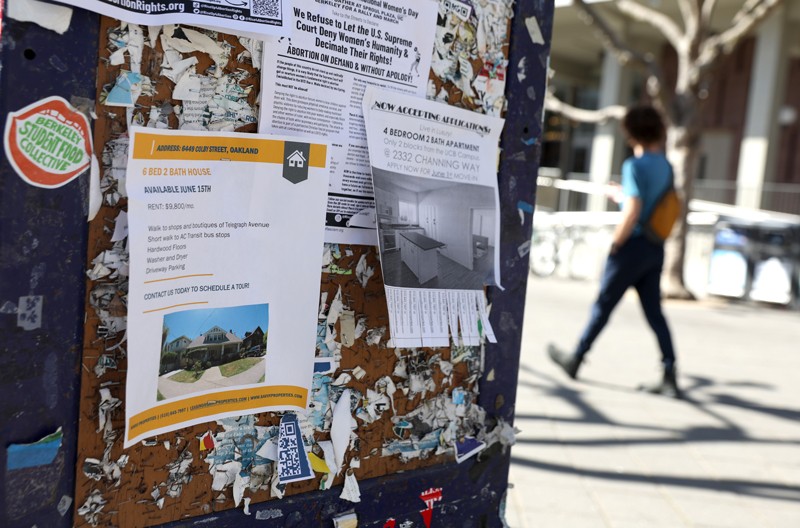Salaries for PhD students in the biological sciences fall well below the basic cost of living at almost every institution and department in the United States, according to data collected by two PhD students.
The crowdsourced findings, submitted by students, faculty members and administrators and presented on an interactive dashboard, provide fresh ammunition for graduate students in negotiations for higher salaries as economies across the world grapple with rising inflation.
As this article went to press, just 2% of the 178 institutions and departments in the data set guaranteed graduate students salaries that exceed the cost of living. The researchers used the living-wage calculator maintained by the Cambridge-based Massachusetts Institute of Technology (see go.nature.com/3pkzjde), a widely used benchmark that estimates basic expenses for a given city, such as the costs of food, health care, housing and transport.
Most institutions fall far short of that standard. At the University of Florida in Gainesville, for example, the basic stipend for biology PhD students is around US$18,650 for a 9-month appointment, about $16,000 less than the annual living wage for a single adult in the city with no dependents. At a handful of institutions — including the University of Southern Mississippi in Hattiesburg and the University of South Dakota in Vermillion — the guaranteed minimum stipend is less than $15,000 for 9-month appointments.
With US annual inflation now exceeding 8%, stipends haven’t been keeping pace, says Michelle Gaynor, a fourth-year PhD student in evolutionary biology at the University of Florida. Gaynor created the dashboard along with Rhett Rautsaw, a fifth-year PhD student in evolutionary biology at Clemson University in South Carolina.
Costs are rising so quickly that some salaries that qualified as a living wage in early April had fallen below that mark by the end of the month. “It would be amazing if students could focus on the science and not whether they can afford an apartment,” Gaynor says. “Not every grad student has that privilege.”
Salary shortfalls
Gaynor and Rautsaw started collecting the data after a study in March showed wide gaps between stipends and the cost of living for entomology students in 20 PhD programmes and 19 master’s degree programmes in the United States (M. Kirchner & J. Petzoldt Am. Entomol. 68, 22–23; 2022). The study found that although students at three universities in the northeast generally earned living wages, students in other regions fared much worse. In the south, PhD students were nearly $8,000 short of a living wage, on average. The average shortfall nationally was just over $4,500.
Gaynor shared a plot of their initial results on Twitter, and the post quickly went viral. “I feel like I opened the floodgates,” she says. “Graduate students are telling me about their experiences. They’re struggling.”
The United States isn’t the only country where graduate stipends aren’t keeping pace with inflation. UK Research and Innovation, for example, Britain’s largest public funder of research, is set to increase the current minimum PhD stipend of £15,609 (US$19,315) by 2.9% for the 2022–23 academic year. That’s less than half the UK rate of inflation, which currently stands at 9%.
Basic minimum stipends — essentially a guaranteed salary for a graduate student — are only one source of remuneration. Some students earn significantly more through fellowships. Gaynor notes, however, that US fellowships generally cover four years of training, yet it often takes at least five years to earn a PhD. When fellowships run out, a student might be forced to live on a guaranteed minimum wage that doesn’t come close to meeting needs.
The current state of PhD salaries threatens to undermine US efforts to increase diversity in science, Gaynor says. “If programmes aren’t meeting the basic cost of living, who are we selecting for? People who have financial support or external fellowships.”
Some faculty members are expressing concerns about the current generation of students. “It was difficult when I was a grad student, but it’s far worse now,” says Akito Kawahara, an evolutionary biologist at the University of Florida. “Students can’t survive these days with the salaries that are out there. Students are leaving universities or not coming to universities because the base salaries are so low.”
The universities that do offer a living wage are true outliers. At Brown University in Providence, Rhode Island, for example, the basic annual stipend for biology PhDs exceeds $42,000, well above the local cost of living of about $36,000. Other institutions that pay a living wage (or close to it) include Princeton University in New Jersey; Washington University in St. Louis, Missouri; Vanderbilt University in Nashville, Tennessee; and the Massachusetts Institute of Technology’s department of computational and systems biology in Cambridge (see ‘Where US biology PhD students can — and can’t — get by’). In January, Princeton University announced that it would establish a minimum 10-month graduate-student stipend of $40,000 — close to the local living wage — for all university departments for the 2022–23 academic year.
About one-third of the stipends included in Gaynor and Rautsaw’s database are for 9-month appointments and about 5% are 10-month appointments. Gaynor says that although some students have sources of income for the months not covered by their stipend, others have to stretch those funds to last the whole year. “Faculty often try their hardest to make sure you have a salary [for the entire year], but it’s not guaranteed,” she says. “I know people at other universities who were told they were going to have a summer salary and then they didn’t.”
Added value
Some administrators argue that students are receiving valuable training that will pay great dividends later, but such low wages are unfair and unsustainable, says Jane Petzoldt, a third-year master’s student in entomology at North Carolina State University (NC State) in Raleigh, and a co-author of the entomology stipend study. “The value of our work far exceeds the stipend and graduate-support packages,” she says.
Co-author Michelle Kirchner, a third-year PhD student in entomology at NC State, says their graduate-student contract prohibits taking on a second job to make ends meet. “How am I supposed to support myself?” she asks. “The university should be required to pay the cost of living.”
Last December, to better understand the situation, Petzoldt helped to conduct a survey of 35 students in the entomology and plant pathology department at NC State. About one-quarter of respondents said they had broken the rules of their contract by taking a second job, and 15% reported trouble in affording groceries (see go.nature.com/3wey9gj). “The financial stress is cutting into our ability to perform as graduate students,” Petzoldt says.
A spokesperson for NC State noted that many US universities prohibit outside employment for graduate students, adding: “Historically, these graduate-student appointments are akin to scholarships that provide graduate students a stipend and cover the costs of tuition and health insurance. Although many assistantships at NC State reach and exceed a living wage, some are lower than we’d prefer.”
Some universities are keenly aware of the financial straits their trainees are in. In a survey published last September by the Graduate College of the University of Arizona in Tucson, more than 80% of the nearly 2,500 respondents, representing departments across the university, reported feeling stressed about their financial situation. One-quarter reported using a food bank, and 36% reported taking out unanticipated loans since starting their graduate programme (see go.nature.com/3jvpg4v).
In comments, many respondents highlighted the gap between stipends and the cost of living. One wrote that “graduate students are needlessly suffering and the university can do far more than it is doing to lessen the burden”. Another wrote: “Pay your graduate students a liveable salary! Getting a doctorate is hard enough … [worrying] about finances makes this experience loathsome and diminishes my opinion of this university.” Gaynor and Rautsaw’s tracker shows the minimum stipend for biology PhDs at the University of Arizona is $20,000 for a 9-month appointment, which is about $12,500 less than the estimated cost of living for a single adult in Tucson. The university conducted its 2021 survey after hearing widespread complaints from graduate students, says Andrew Carnie, a vice-provost at the university and a co-author of the survey. “Financial health is so clearly tied to student health, productivity, retention and recruitment,” he says. “It is something that no university can ignore. It requires critical action.”
Addressing the shortfalls
Carnie thinks that student stipends need to be higher, but takes some issue with the figures in the tracker, notably that the $20,000 stipend is for a 9-month appointment. “Most biological-sciences students are actually on 12-month stipends, for which the $20,000 rate is prorated to about $27,000,” he says. He adds that the university also reduces the cost of living by providing health insurance to graduate students.
The University of Arizona announced last year that every department will pay a minimum stipend of $20,000, starting in the 2022–23 academic year. . Previously, says Carnie, the average base stipend for a 9-month appointment was around $17,000. He adds that the university encourages departments to pay beyond the minimum when possible. The base level is now tied to a government cost index, so students shouldn’t fall farther behind as prices rise. “With the current rates of inflation, I expect that this minimum will likely increase substantially over the next few years,” he says.
Carnie says the university is taking other steps to help students cope with costs. “We are currently advocating at the state level for improved health-care coverage, including dental, spousal and dependent care,” he says. “We are also working with our institutional partners to create new opportunities for grad student and family housing, and working to find low-cost childcare. These are priority issues for us.”
Pay negotiations
Last November, NC State students in the department of entomology and plant pathology successfully negotiated for a rise, partly with the help of the data collected by Petzoldt and Kirchner. After accounting for fees, the new minimum take-home pay will be $28,400, a $2,400 increase from the current base stipend of $26,000. The current stipend is about $12,600 below the living wage for the area . Details of the rise, which will go into effect in July, are not yet publicly available, but Petzoldt says it’s $1,000 more than the university originally offered. The current stipend is $26,000, which is about $12,600 below the living wage for the area. Petzoldt says they’ve heard from entomology students at several other institutions who plan to use the results in their negotiations.
In April, graduate students at the University of Florida started negotiations for a rise of their own. On 29 April, the university offered to boost the base 9-month salary for all departments from $16,000 to $17,000. That offer, which the university called “final”, has not yet been accepted, and negotiations continue. A spokesperson told Nature that the university couldn’t comment on graduate-student stipends because discussions are still under way.
Kawahara joined an early bargaining session at which, he says, there were roughly 100 students present, but he didn’t notice any other faculty members. “I’ve had students who also worked for DoorDash [a food-delivery company],” he says.
The negotiations were “eye-opening”, Kawahara says. “It was basically the students versus the university, and the university was very rigid.”
Kawahara says that individual faculty members can take steps to support PhD students, such as by letting them know about available fellowships. But such piecemeal efforts can lead to disparities, he says. “You can have an unfair situation where one student is making $16,000 and another student makes close to $30,000,” he says. In his view, the only way to avoid such discrepancies is to make liveable wages standard across the university.
Gaynor is keen to get salary details for more US biology departments. “The more input we get, the better the data set becomes,” she says.








More Stories
Platonic-Fullerene Chemistry and the Ethics of Human Survival
Ethics in the Economic Planning Industry
Develop Corporate Tradition on Good Business Ethics by Keeping away from Failure Platitudes